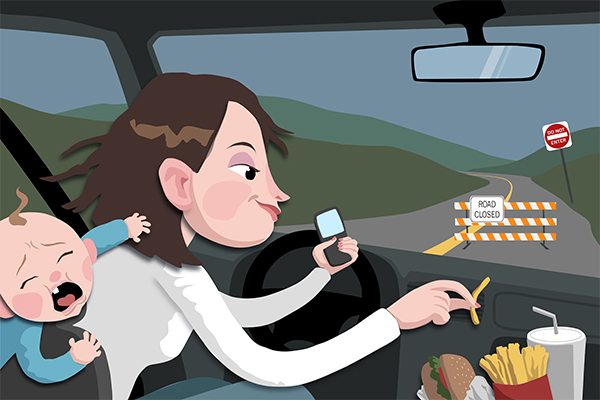Phones, smoking, other distractions may affect driving, most studies say

Illustration: Division of Research
In a study published in the January 2014 issue of the American Journal of Public Health, a Texas A&M University scholar examined past research on distracted driving and the relationship between non-driving activities and driving performance.
“People engage in distracted driving when they simultaneously operate a vehicle and participate in a non-driving activity (secondary tasks) that could divert attention away from the primary task of driving,” said Alva O. Ferdinand, assistant professor at the Texas A&M Health Science Center School of Public Health. “The purpose of this study was to systematically review and meta-analyze the literature on the relationship between secondary tasks and driving performance.
In the study titled “Associations Between Driving Performance and Engaging in Secondary Tasks: A Systematic Review,” researchers analyzed the data from more than 200 empirical articles published between the 1989 or earlier and 2012 that examined various secondary tasks such as cell phone usage, cigarette smoking, eating, or interacting with passengers and their impact on driving performance.
About 80 percent of the studies found a negative relationship between secondary tasks and driving performance. In addition, the study showed that cell phone usage was highly associated with decreased driving performance.
More from the Texas A&M Health Science Center

